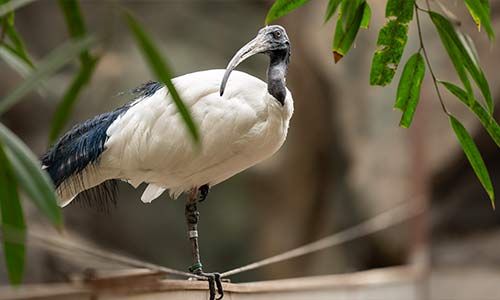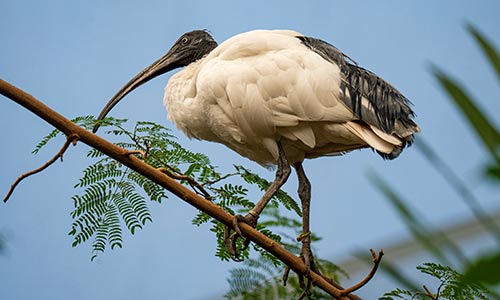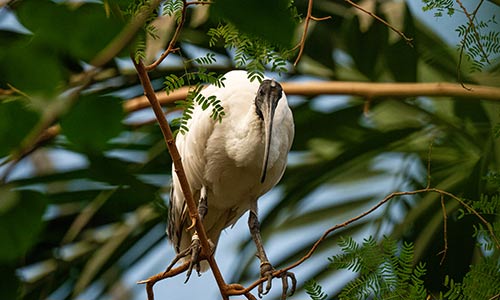Madagascar Sacred Ibis
Threskiornis bernieri
About the Madagascar Sacred Ibis
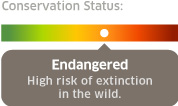
Geographic Range:
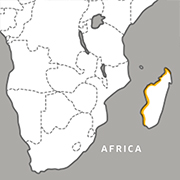
Class: Aves
Order: Pelecaniformes
Family: Threskiornithidae
Genus: Threskiornis
Species: Bernieri
Male and female ibis both have black head and tail feathers, a white body and long bill. Ibis are a social species, roosting in large groups of up to 500 birds. These birds are diurnal, meaning they’re active during the day. They forage in flocks in brackish coastal areas like mudflats and estuaries, returning to the roost in the evening.
Committed to Conservation
The Madagascar sacred ibis is under considerable threat and the population is declining. Several related problems threaten this species. As it mostly breeds in coastal mangrove forests along the northeast coast of Madagascar, the loss of trees for firewood, charcoal and coastal development threaten breeding grounds. The birds are not easily frightened by people and thus are easily hunted, and egg collection is also a serious problem. Siltation of their feeding grounds in coastal estuaries from deforestation and run-off is also considered a threat. There are probably only about 2,000-3,000 of these birds left in the world, and IUCN lists them as Endangered.
Here in Massachusetts, Zoo New England's Field Conservation Team works to protect and restore the habitat of threatened and endangered birds, reptiles and more! You can help by becoming a member of the ZNE Conservation Society.
Ibis Facts
Appearance:
Males and females both have black head and tail feathers, a white body and long bill. They have long legs, wide feet, and their toes are spread apart. Females are often smaller than males.
Size:
Height: Up to 27 inches tall, wingspan up to 49 inches
Weight: 3 to 3.3 pounds; females are smaller than males.
Diet:
This omnivorous species eats insects, small crustaceans, organic material, and some small vertebrates.
Reproduction:
Ibis reach sexual maturity at 2 years of age. They breed during Madagascar’s rainy season (November and December).
Social Structure:
Colony breeders, ibis roost in large groups of up to 500 birds, though most groups consist of about 10 individuals.
Behavior:
Ibis are a social species, gathering in large colonies to roost, breed and build platform nests of twigs. These birds are diurnal, meaning they’re active during the day. They forage in flocks in brackish coastal areas like mudflats and estuaries, returning to the roost in the evening. They have a large array of vocalizations, including specific sounds for aggression, mating and communicating with their offspring.
Habitat/Range:
Ibis are only found along the west coast of Madagascar in lowland, brackish coastal areas (mudflats and estuaries). They’re occasionally found in inland rice fields and freshwater lakes.
Median Life Expectancy:
Approximately 10 years in the wild
Threats:
Ibis are limited to a small range, and they are threatened by loss of habitat.
You Can Find This Animal in the Tropical Forest
Join our Conservation Society
Our Field Conservation Team works to protect and restore habitat of threatened and endangered birds, reptiles and more! You can help by becoming a member of the ZNE Conservation Society.
Look Up!
Want to spot this bird? Look up! Ibises fly freely through the Tropical Forest.
You might also like
At Franklin Park Zoo:
At Stone Zoo:

